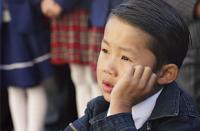Энэ 7 хоногт
Eagle Festival Highlights Kazakh Culture in Mongolia
At the top of a craggy mountain in the Altai range, a man raises his fist to reveal a golden eagle with a six-foot wingspan. The eagle spies its mark in the valley below and bolts into the air. Within seconds, the bird slams into its target, dust billowing.
At the top of a craggy mountain in the Altai range, a man raises his fist to reveal a golden eagle with a six-foot wingspan. The eagle spies its mark in the valley below and bolts into the air. Within seconds, the bird slams into its target, dust billowing.
In a modern twist to this saga, a crowd of hundreds gathered in the valley erupts into cheers. Today, the “prey” is an old piece of fox fur pulled behind a horse; the “hunt” is a competition at the annual Eagle Festival in Mongolia’s Bayan Ulgii Province.
The Berkut (Eagle Hunters) Association organized the first eagle hunting festival 11 years ago, with support from a US-based tourism company, Nomadic Expeditions, in Bogat District, just outside Bayan Ulgii’s center. Soon afterwards, a rival annual festival organized by a local tour company started in Bayan Ulgii’s Sagsai District. A local history teacher plans to start a third festival this September. Collectively, they form the cornerstone of the largely Kazakh-populated province’s tourism sector, the most developed in western Mongolia.
Organizers and participants claim the events play a major role in preserving traditional Kazakh culture. But as more tourists attend the festivals each year, some locals are concerned that the events also encourage profit-seeking participants, threatening both the eagles and the traditions themselves.
Marco Polo documented Mongolians, Kazakhs and Kyrgyz using golden eagles for hunting when he passed through the region in the 13th century. Today, it appears that only Mongolia’s small Kazakh community – numbering about 100,000 – continues the practice. The most coveted prey is fox, which Kazakhs use to make their signature fur hats.
Khuatkhan, a middle-aged villager who, like most Mongolian citizens, goes by one name, represents the old guard of eagle hunters. He began hunting 36 years ago, and says that five generations of his family, from his great-grandfather to his own children, have hunted with eagles. “I’ve heard that my family was hunting even further back, but I can’t be sure,” he says. Now, he acts as a mentor to a few young men, “but most aren’t very interested. They want to be in Ulaanbaatar [the capital], or Kazakhstan,” he says.
Unlike most of the world’s eagle falconers (falconry is the term for hunting with any raptor), who tend to fly smaller, less aggressive males, Khuatkhan and most Kazakhs prefer female eagles captured during early adulthood, between the ages of one- and three-years-old. While older birds do sometimes leave their trainers, never to return, hunters are less likely to lose a well-trained and oft-flown eagle.
Adult eagles taken from the wild can be returned eventually, ensuring that eagle hunting is sustainable and doesn’t have an adverse impact on food chains and eagle populations, says Lauren McGough, an American falconer and Fulbright Scholar in Bayan Ulgii.
Festival participants may be the ones who threaten the sustainability of this ancient tradition. In Bogat and Sagsai, where the festivals take place, there is fierce competition for eagles.
“They end up going earlier and earlier every year, and sometimes they take young chicks from the nest that don’t know how to hunt, don’t know how to fly. It takes a lot of work to get them into shape,” McGough says. An eagle taken from the nest can never be returned to the wild, she added.
“I think [the festival] does encourage people to go out and get an eagle any way they can and just show it off at the festival,” McGough continued. “So, I don’t know if the skills are being transferred. I feel like there’s this rash of poorly trained and psychologically confused eagles out there because of the festivals.”
Eighty percent of the eagle hunters near Bayan Ulgii’s province center now use eagles taken from the nest, estimates Canat, the owner of the Blue Wolf Travel Company and founder of the Sagsai festival.
Local and foreign tourist attendance at both the Bogat and Sagsai festivals has risen substantially in the last few years. At the first Bogat festival there were 30 hunters and just 10 foreign tourists, says Kyzilbai Khijaba, the director of Bayan Ulgii’s museum and a Berkut Association board member for nine years. “Now people come from everywhere,” he says. The 2009 festival attracted visitors from as far away as Brazil, Indonesia, and the United States.
About 100 eagle hunters participated in the 2009 festival, and while the number of hunters in the province has swelled to around 400 in the last 10 years, not all are in it for the thrill of the hunt. “I call them ‘showman’ hunters,” says Canat.
“It takes years to achieve competency” by apprenticing with a master hunter, added McGough. “The ultimate goal is to catch foxes because it takes a very fit, strong, well-cared-for bird to catch a wild animal.”
Many from the old family hunting dynasties are critical of their less devoted peers. “They don’t know the essence of hunting,” says Amanbek, a 26-year-old who learned to hunt by following his father into the mountains as a child. “It’s also bad for tourism if tourists are getting incorrect information about eagle hunting,” says the nine-time festival participant.
Still, nearly all admit that the festivals have been an economic boon to the province. The mountainous region faces development challenges: it is the only province with a non-Mongolian majority, and it sits closer to the capital of Kazakhstan than to that of its own country, Ulaanbaatar.
Eagle hunters, women’s handicraft collectives, musicians, travel companies, and the Berkut Association all benefit from the tourism the festival brings, says Kyzilbai, the local museum director.
Even so, in many ways, tourism is an afterthought for the festival’s organizers. Local Kazakhs continue to make up the majority of the spectators. Most participants receive only food for their efforts. “The hunters aren’t coming for money. They mostly come to show other people. The goal is to preserve the tradition,” Kyzilbai said.
In a modern twist to this saga, a crowd of hundreds gathered in the valley erupts into cheers. Today, the “prey” is an old piece of fox fur pulled behind a horse; the “hunt” is a competition at the annual Eagle Festival in Mongolia’s Bayan Ulgii Province.
The Berkut (Eagle Hunters) Association organized the first eagle hunting festival 11 years ago, with support from a US-based tourism company, Nomadic Expeditions, in Bogat District, just outside Bayan Ulgii’s center. Soon afterwards, a rival annual festival organized by a local tour company started in Bayan Ulgii’s Sagsai District. A local history teacher plans to start a third festival this September. Collectively, they form the cornerstone of the largely Kazakh-populated province’s tourism sector, the most developed in western Mongolia.
Organizers and participants claim the events play a major role in preserving traditional Kazakh culture. But as more tourists attend the festivals each year, some locals are concerned that the events also encourage profit-seeking participants, threatening both the eagles and the traditions themselves.
Marco Polo documented Mongolians, Kazakhs and Kyrgyz using golden eagles for hunting when he passed through the region in the 13th century. Today, it appears that only Mongolia’s small Kazakh community – numbering about 100,000 – continues the practice. The most coveted prey is fox, which Kazakhs use to make their signature fur hats.
Khuatkhan, a middle-aged villager who, like most Mongolian citizens, goes by one name, represents the old guard of eagle hunters. He began hunting 36 years ago, and says that five generations of his family, from his great-grandfather to his own children, have hunted with eagles. “I’ve heard that my family was hunting even further back, but I can’t be sure,” he says. Now, he acts as a mentor to a few young men, “but most aren’t very interested. They want to be in Ulaanbaatar [the capital], or Kazakhstan,” he says.
Unlike most of the world’s eagle falconers (falconry is the term for hunting with any raptor), who tend to fly smaller, less aggressive males, Khuatkhan and most Kazakhs prefer female eagles captured during early adulthood, between the ages of one- and three-years-old. While older birds do sometimes leave their trainers, never to return, hunters are less likely to lose a well-trained and oft-flown eagle.
Adult eagles taken from the wild can be returned eventually, ensuring that eagle hunting is sustainable and doesn’t have an adverse impact on food chains and eagle populations, says Lauren McGough, an American falconer and Fulbright Scholar in Bayan Ulgii.
Festival participants may be the ones who threaten the sustainability of this ancient tradition. In Bogat and Sagsai, where the festivals take place, there is fierce competition for eagles.
“They end up going earlier and earlier every year, and sometimes they take young chicks from the nest that don’t know how to hunt, don’t know how to fly. It takes a lot of work to get them into shape,” McGough says. An eagle taken from the nest can never be returned to the wild, she added.
“I think [the festival] does encourage people to go out and get an eagle any way they can and just show it off at the festival,” McGough continued. “So, I don’t know if the skills are being transferred. I feel like there’s this rash of poorly trained and psychologically confused eagles out there because of the festivals.”
Eighty percent of the eagle hunters near Bayan Ulgii’s province center now use eagles taken from the nest, estimates Canat, the owner of the Blue Wolf Travel Company and founder of the Sagsai festival.
Local and foreign tourist attendance at both the Bogat and Sagsai festivals has risen substantially in the last few years. At the first Bogat festival there were 30 hunters and just 10 foreign tourists, says Kyzilbai Khijaba, the director of Bayan Ulgii’s museum and a Berkut Association board member for nine years. “Now people come from everywhere,” he says. The 2009 festival attracted visitors from as far away as Brazil, Indonesia, and the United States.
About 100 eagle hunters participated in the 2009 festival, and while the number of hunters in the province has swelled to around 400 in the last 10 years, not all are in it for the thrill of the hunt. “I call them ‘showman’ hunters,” says Canat.
“It takes years to achieve competency” by apprenticing with a master hunter, added McGough. “The ultimate goal is to catch foxes because it takes a very fit, strong, well-cared-for bird to catch a wild animal.”
Many from the old family hunting dynasties are critical of their less devoted peers. “They don’t know the essence of hunting,” says Amanbek, a 26-year-old who learned to hunt by following his father into the mountains as a child. “It’s also bad for tourism if tourists are getting incorrect information about eagle hunting,” says the nine-time festival participant.
Still, nearly all admit that the festivals have been an economic boon to the province. The mountainous region faces development challenges: it is the only province with a non-Mongolian majority, and it sits closer to the capital of Kazakhstan than to that of its own country, Ulaanbaatar.
Eagle hunters, women’s handicraft collectives, musicians, travel companies, and the Berkut Association all benefit from the tourism the festival brings, says Kyzilbai, the local museum director.
Even so, in many ways, tourism is an afterthought for the festival’s organizers. Local Kazakhs continue to make up the majority of the spectators. Most participants receive only food for their efforts. “The hunters aren’t coming for money. They mostly come to show other people. The goal is to preserve the tradition,” Kyzilbai said.






